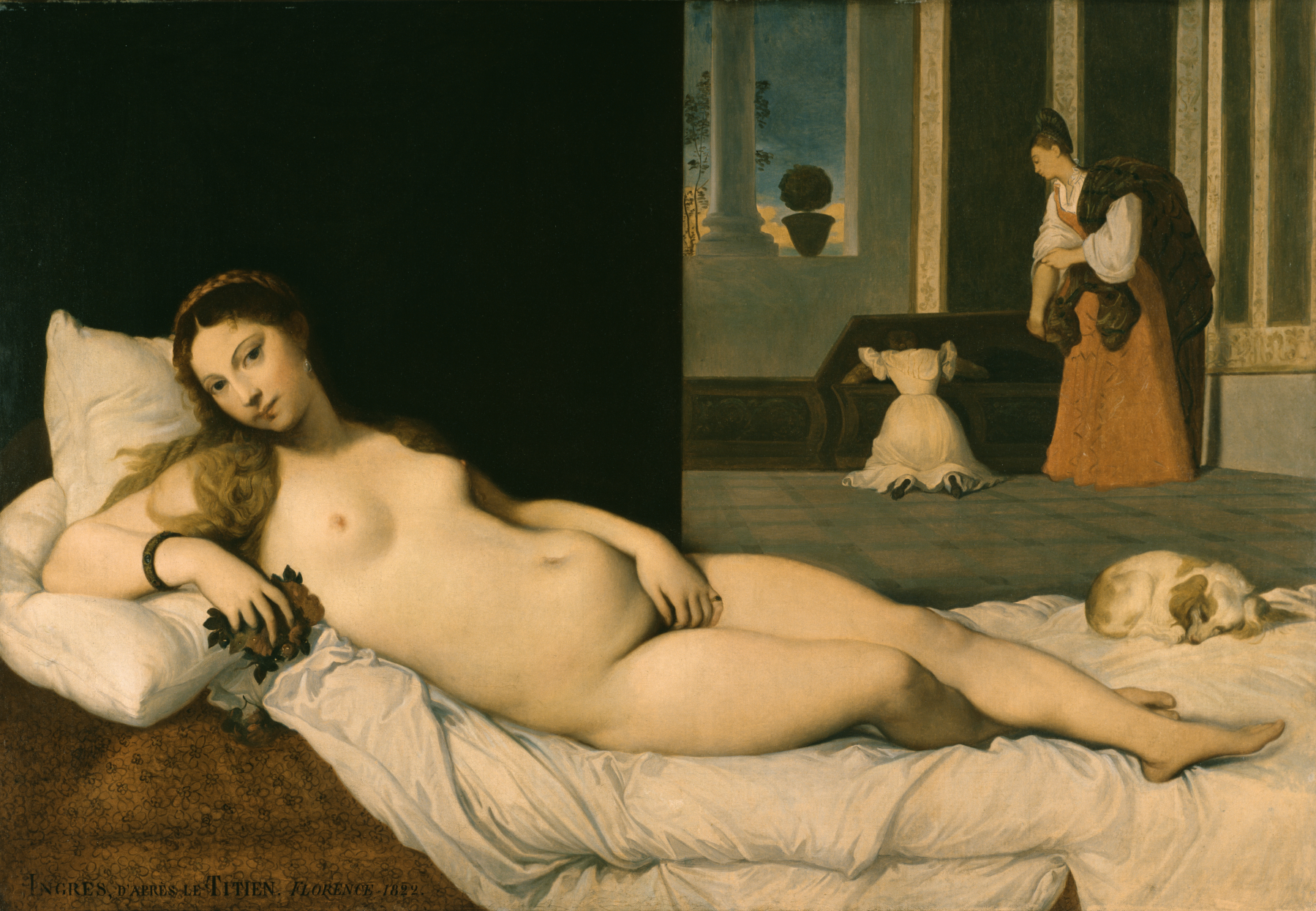Reclining Venus
(18th and 19th Centuries )
Ingres was deeply inspired by ancient Greek and Roman art as well by Italian painting of the High Renaissance. Although he spent much of his career in Rome, he resided in Florence from 1820 to 1824, where he painted this copy of Titian's "Venus of Urbino" (1538), from the collection at the Pitti Palace. "The Venus of Urbino" had inspired generations of artists. Ingres's version is the same size as the original. He intended it to serve as a model for his close friend, the sculptor Lorenzo Bartolini (1777-1850), who was creating a sculpture based on the same subject.
Inscription
Provenance
Provenance (from the French provenir, 'to come from/forth') is the chronology of the ownership, custody, or location of a historical object. Learn more about provenance at the Walters.
Bequeathed by Ingres to Armand Cambon, 1866; sold to Haro, Oct. 6, 1866; Ingres Sale, Paris, May 6-7, 1867, n. 2; Sale Khalil Bey, Paris, Jan. 10-18, 1868, no. 35 (10,000 francs); Wande Collection, Lille, 1870. Henry Walters, Baltimore [date and mode of acquisition unknown]; Walters Art Museum, 1931, by bequest.
Exhibitions
| 2006 | Ingres, 1780-1867. Musée du Louvre, Paris. |
Geographies
Italy, Florence (Place of Origin)
Measurements
H: 45 11/16 x W: 66 1/8 in. (116 x 168 cm); Framed H: 59 1/2 x W: 80 1/2 x D: 5 1/4 in. (151.1 x 204.5 x 13.3 cm)
Credit Line
Acquired by Henry Walters
Location in Museum
Not on view
Accession Number
In libraries, galleries, museums, and archives, an accession number is a unique identifier assigned to each object in the collection.
In libraries, galleries, museums, and archives, an accession number is a unique identifier assigned to each object in the collection.
37.2392


